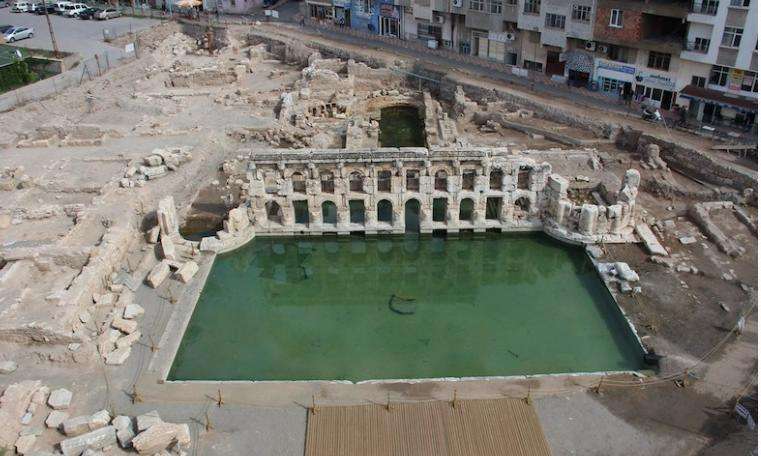Sarıkaya Roman Bath in Yozgat, also known as Basilica Therma, has been used as a natural hot water source for 2,000 years.
In 2018, the bath, which was inscribed on the Unesco World Heritage Tentative List, has been an uninterrupted source of hot water since ancient times. It is one of the most important Roman buildings in the Central Anatolia Region that has survived from ancient times.
The relief of a snake-like figure (Asclepius, the god of health) suggests that this building was used not only for cleaning but also for healing. After paganism was banned during the reign of Emperor Theodosius, Basilica Therma became an episcopal center thanks to the church built next to the Roman Baths.
The building was built directly into the thermal spring and has survived for 2000 years thanks to its solid foundation in the water. This foundation was not built on a stable ground, like a pile blocking the flow of water, but was placed in a thermal area where water came out from everywhere. The fact that it was built with a strong foundation on a weak ground shows the high level of Roman architecture.
This structure, which was a thermal center during the Roman Empire, was used as a resting place by Roman soldiers on campaign. The figure of a “snake with its tongue out”, which is not common in Roman artifacts, is found in the Roman bath in Sarıkaya. This figure is also thought to be a symbol of medicine and health.
The 30-meter-long facade has two small semicircular pools on the north and south sides. Behind the façade, there is an inner pool surrounded by stairs on both sides and arches that connect directly to the large pool in front.
The facade of the Roman Bath was built in the Corinthian order. From the upper edge of the large pool in front there is a corrugated column on the plinthos on the Attic-Ionian column and a Corinthian head above it. The front part of the facade elements up to the head of the plinthosan is decorated on blocks that shape the legs of the arch in high relief halfway up.
Since the half-column drums from the lower column to the capitals were made separately and mounted on the façade, these parts fell apart and did not survive. The arch line begins at the bottom with a sleigh arch and continues with a straight sleigh arch, a pair of sleigh arches in the middle, and the last belt is finished as a gable arch, creating a symmetrical appearance.
The upper row of arches is designed in contrast to the lower row. The architrave at the top is a bifacial ornamental block with an upper edge ending in a string of beads and a row of eggs, a bull’s head frieze and a row of eggs.
The blocks that should have been in the architrave are not present today. During the excavations, only one was found in front of the semicircular pool in the north. The columns to the north of the Roman Baths, partly under the modern city, may belong to a possible gate structure and their capitals were found. These capitals are of Ionic type.
Ksamil Travel Guide: Where to Go, Where to Stay, What to Eat?

